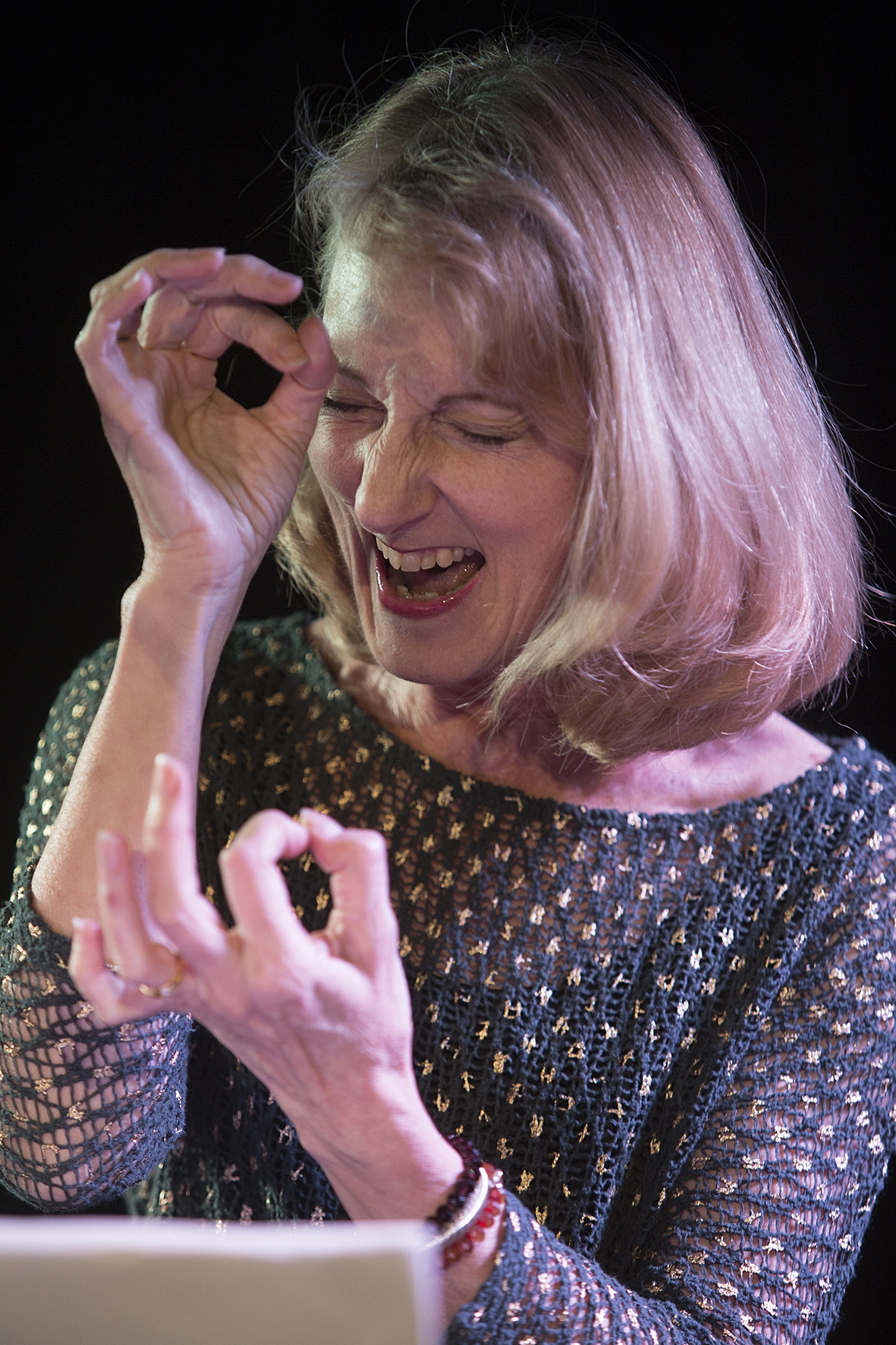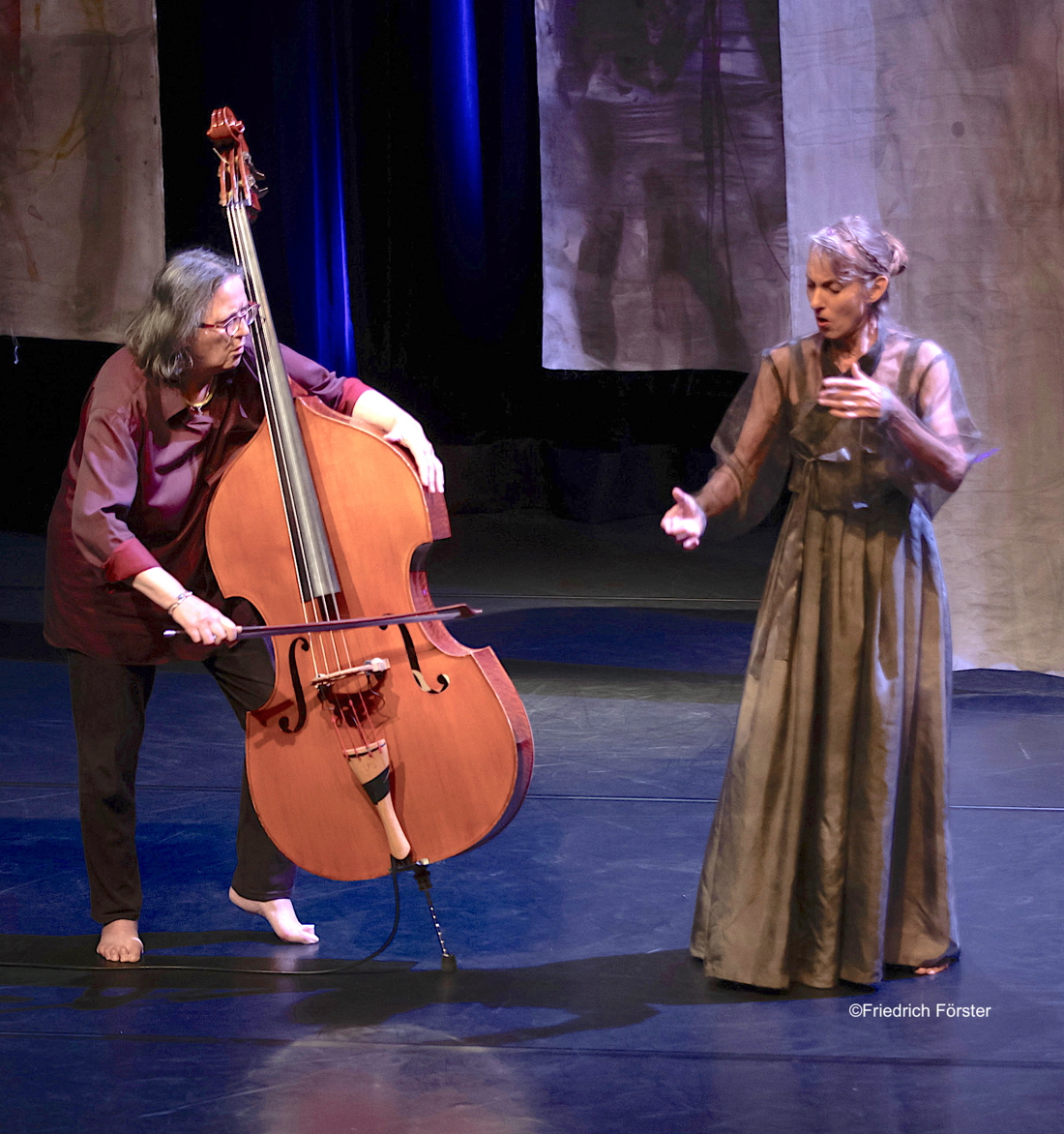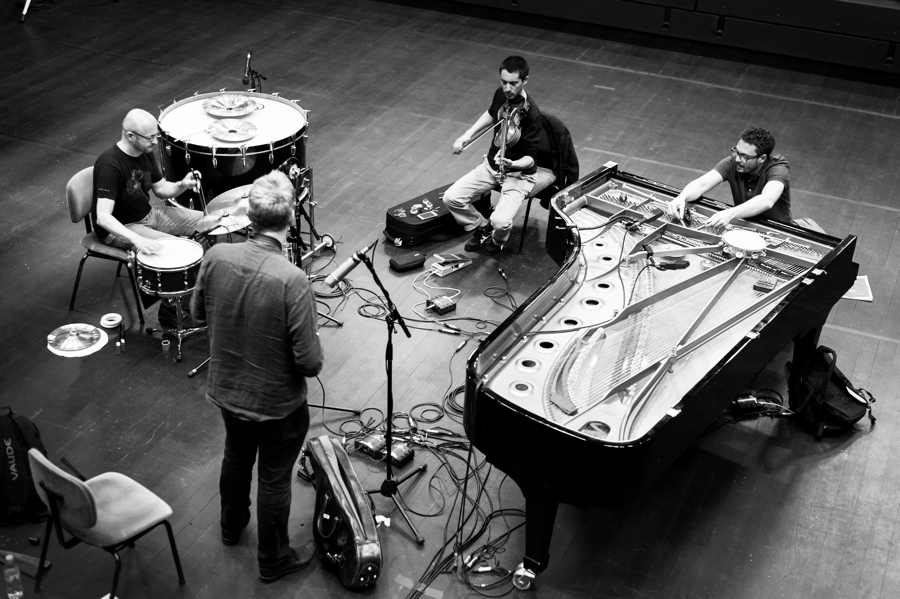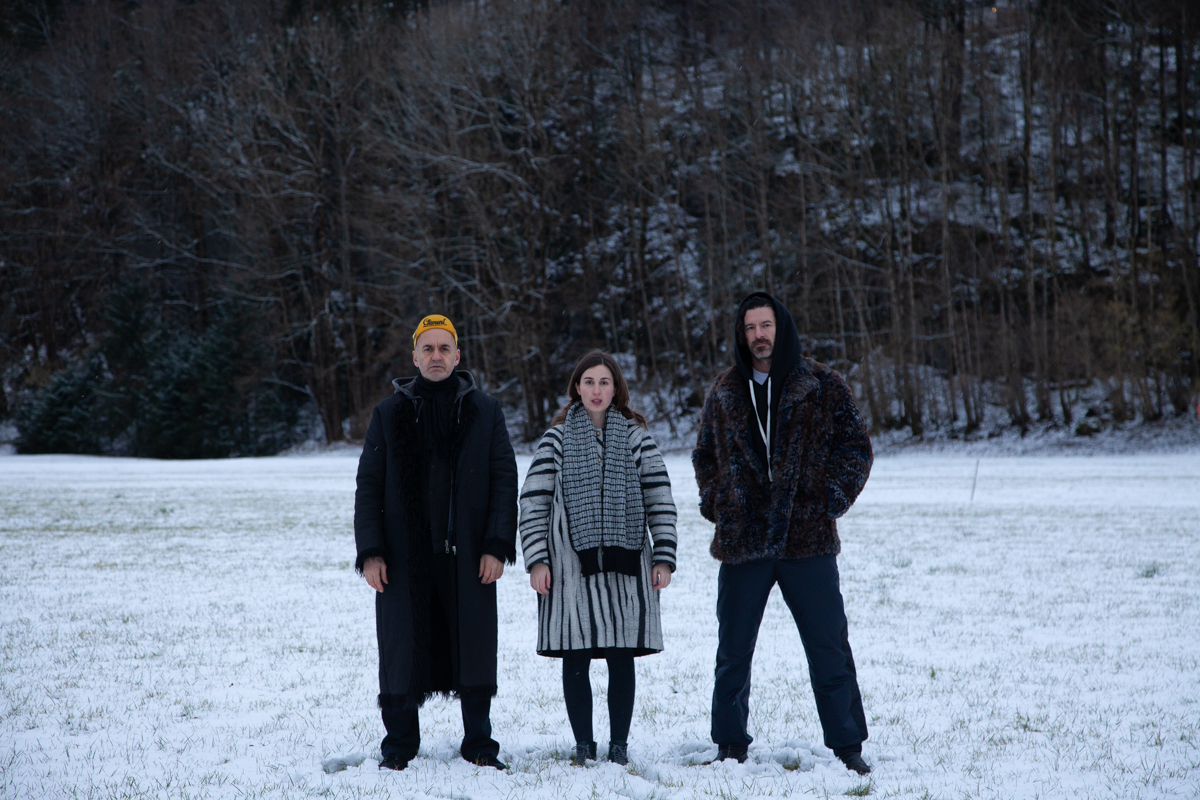A pioneer of vocal artistry – US-American vocalist Lauren Newton.
Her passion for exploring the full potential of the voice drives her work in free improvisation, jazz and contemporary music. Closely associated with the Swiss experimental music scene, she taught jazz vocal performance and free improvisation at the Lucerne University of Music (HSLU) between 1993 and 2019.

Luca Koch
While her career encompasses a broad range of ensembles, from large jazz orchestras to vocal ensembles and long-standing duos, her concerts are notable for their captivating depth and immediacy. This year Lauren Newton is celebrating her 50th anniversary on stage. For the SRF Culture programme Living Past, I visited her in Tübingen, Germany, where she is currently based and had the chance to listen to groundbreaking live recordings with her.
A twist of fate
Lauren Newton actually wanted to study art in Oregon in the USA, but she didn’t get in and, as a twist of fate, she tried her luck in the music department. Both classical music and jazz were already present at home. Her father played double bass and sang in nightclubs. Lauren also had a good voice and began studying classical singing. In her third bachelor year, she was allowed to take part in an exchange year in Stuttgart. This was unusual for Bachelor students, but her teacher vouched for her and Germany became her new home.
Lauren Newton, Sound Songs, Solo–Improviation 2006.
Classical music student by day, jazz-rock singer by night
In Stuttgart, Lauren began her Masters in the singing class of opera singer Sylvia Geszty and at the same time immersed herself in the city’s young jazz scene. At a jam session, she met trumpeter Frederic Rabold, who was impressed by her voice. A short time later, Newton was singing in his jazz-rock band, the Frederic Rabold Crew. The mix of simply composed themes and free improvisation was ideal for her and allowed her to refine and use previously acquired skills in the more liberated setting of improvisation. Both activities merged seamlessly, it never felt like a double life, she told me in the interview.
Vienna Art Orchestra
The Frederic Rabold Crew was invited to Vienna in 1979 for the television programme Bourbon Street, which did not go unnoticed by Swiss jazz musician Mathias Rüegg, who had founded the Vienna Art Orchestra with Wolfgang Puschnig two years earlier. After the TV appearance, he immediately asked Lauren Newton if she wanted to join. For ten years, Lauren Newton was an irreplaceable part of the Vienna Art Orchestra, which became an authority in experimental jazz with dozens of album productions and major tours. Her voice stands out from the jazz orchestra with razor-sharp precision and playful virtuosity. A time that Lauren Newton would not have missed for the world, even if the constant travelling on the tour bus as the only woman was challenging.
Vocal Summit
I got to know Lauren Newton personally when she was teaching at the Lucerne University of Applied Sciences and Arts. To me, she was not only an important figure as a vocalist with a wide vocal range, but also as a musician with a great interest in other voices. She not only helped her students to discover their own voices, but also collaborated with other singers on stage time and again. Together with Bobby McFerrin, Urszula Dudziak, Jeanne Lee and Jay Clayton, she formed the vocal all-star band: the Vocal Summit. Together, five completely different voices create soundscapes that breathe. Lauren Newton also continued her work with voices in larger formations with vocal ensemble Timbre.
Vom Vom Zum Zum
Lauren Newton has made a name for herself as an experimental vocalist who expresses herself particularly through sounds. But working with text also plays an important role in her music, which is plain to see and hear in her particularly influential collaboration with Austrian poet Ernst Jandl. His poems were deconstructed and reassembled, words were twisted, stretched and spoken backwards. The album Vom Vom Zum Zum, on which Ernst Jandl speaks while Lauren Newton plays around his words, was a special discovery for me.
Pi from Vom Vom Zum Zum, Lauren Newton with Wolfgang Puschnig, Mathias Rüegg, and Uli Scherer, 1988.
Duos in dialogue
Free improvisation is like a musical conversation. The players respond to each other, they comment, agree or argue. This works best in a duo, Lauren Newton tells me in the SWR studio in Tübingen and duo recordings form a large part of her oeuvre, featuring collaborations with Anthony Braxton, Phil Minton, Aki Takase and Joëlle Léandre, for example.
O How We, Lauren Newton and Phil Minton performed together on stage for the first time at the A Voix Haute Festival in Bagnères de Bigorre, France, on August 13, 2010.
The double bassist Joëlle Léandre in particular has accompanied her to this day. Their deep musical friendship is reflected in their interplay. The rich, concise sound of Léandre’s double bass playing perfectly complements Newton’s crystal-clear voice. The duo recently released a new album: Great Star Theatre, San Francisco.
Luca Koch

Frederic Rabold, Frederic Rabold Crew, Mathias Rüegg, Bobby McFerrin, Urszula Dudziak, Jeanne Lee, Jay Clayton, Wolfgang Puschnig, Vienna Art Orchestra, Ernst Jandl, Anthony Braxton, Phil Minton, Aki Takase, Joëlle Léandre.
neoprofile:
Lauren Newton
broadcast SRF Kultur:
Living Past – Lauren Newton, Pionierin der Stimmkunst, 13.02.2024, made by Luca Koch.



